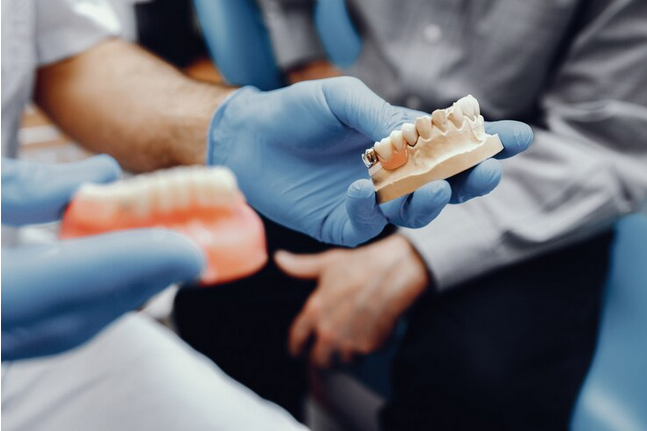A healthy smile is not just about the visible aspects of teeth; it goes beyond the surface to the very foundation of oral health. One critical element in achieving and maintaining this foundation is bone grafting for teeth. This dental procedure plays a pivotal role in restoring and enhancing the structural integrity of the jaw, ensuring a stable base for various dental treatments, including dental implants.
Understanding Bone Grafting:
Bone grafting is a surgical procedure designed to augment or restore bone tissue in the jaw. The jawbone serves as the support structure for teeth, and its health is integral to maintaining a functional and aesthetically pleasing smile. Bone grafting becomes necessary in cases where the jawbone has deteriorated or lacks the necessary density to support dental implants or other restorative procedures.
Why is Bone Grafting Needed?
Several factors can contribute to a weakened or insufficient jawbone. Tooth loss, especially when left unaddressed, can lead to bone resorption, where the jawbone begins to shrink or lose density. This is because the natural stimulation provided by the tooth roots is no longer present. Additionally, periodontal disease, trauma, or congenital conditions may also result in compromised jawbone structure.
For individuals considering dental implants, a sufficiently dense jawbone is crucial for the successful integration and long-term stability of the implants. Without an ample foundation, the implants may not properly anchor, leading to potential complications and reduced efficacy of the treatment.
The Bone Grafting Procedure:
The bone grafting procedure typically involves taking bone tissue from another part of the patient's body (autograft), a donor (allograft), or synthetic materials (alloplast). This harvested bone material is then strategically placed in the targeted area of the jaw that requires augmentation. Over time, the grafted bone integrates with the existing bone, promoting regeneration and strengthening the jaw.
The choice of the grafting material depends on various factors, including the extent of bone loss, the patient's overall health, and the specific goals of the treatment. Modern advancements in dentistry have introduced innovative materials that mimic the properties of natural bone, enhancing the success and efficiency of the grafting process.
Applications in Dental Implants:
Bone grafting is often a prerequisite for individuals seeking dental implants, particularly in cases where significant bone loss has occurred. The success of dental implantation relies heavily on the stability and density of the jawbone. By undergoing bone grafting before implant surgery, patients can ensure a solid foundation for the implants, increasing the likelihood of successful integration and long-term functionality.
Benefits Beyond Implants:
While bone grafting is commonly associated with dental implants, its benefits extend beyond this specific application. It can be instrumental in addressing facial deformities resulting from congenital conditions or trauma. Moreover, bone grafting plays a crucial role in preserving facial aesthetics by preventing the collapse of facial features that may occur when the jawbone loses density.
Considerations and Recovery:
Like any surgical procedure, bone grafting requires careful consideration of the patient's overall health, medical history, and specific dental needs. A thorough examination and consultation with a qualified oral surgeon or periodontist are essential to determine the suitability of bone grafting for an individual.
Recovery from bone grafting varies depending on the extent of the procedure and the type of grafting material used. Patients may experience some discomfort and swelling in the days following the surgery, but adherence to post-operative care instructions can significantly contribute to a smooth recovery process.
Conclusion:
In the realm of dental health, the significance of a strong foundation cannot be overstated. Bone grafting for teeth stands as a testament to the advances in dental science, offering a transformative solution to address compromised jawbones. Whether preparing for dental implants or addressing structural issues, bone grafting plays a vital role in ensuring a stable and healthy foundation for a confident and radiant smile.
By delving into the intricacies of bone grafting, individuals can make informed decisions about their oral health, understanding the potential benefits and considerations associated with this procedure. As dentistry continues to evolve, the pursuit of a healthy smile becomes not just a cosmetic endeavor but a commitment to sustaining the very framework that supports it—our jawbone. In exploring bone grafting for teeth, we embrace a future where dental interventions not only restore aesthetics but also uphold the fundamental elements of oral well-being.





Comments